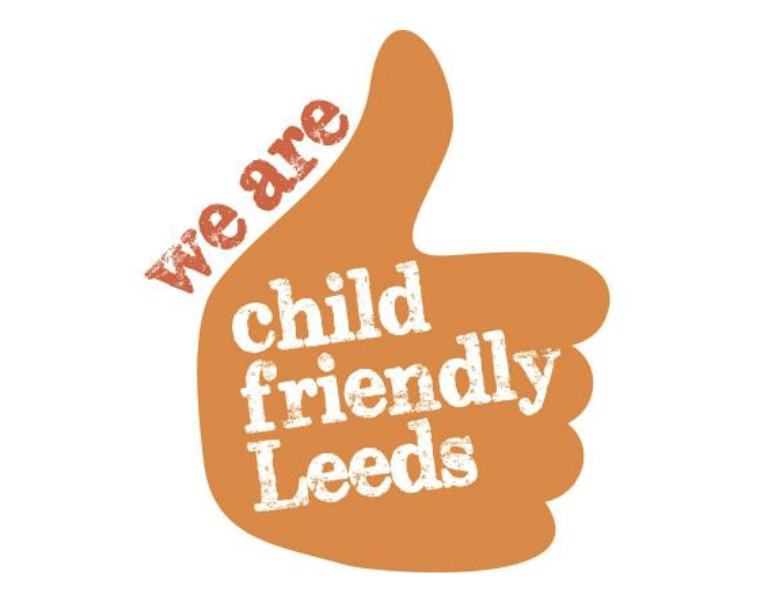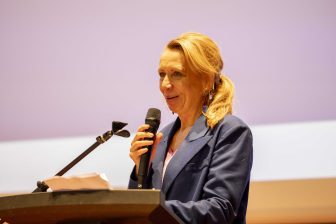
Child Poverty in Western Cities preview – Q&A with Andy Lloyd, Leeds Children’s Services
Child poverty in western cities is a problem often masked by cities’ wealthier areas and conurbations. One such example is Leeds in northern England, which next month hosts the Child Poverty in Western Cities international conference. As Head of Children’s Workforce Development in Leeds Children’s Services, Andy Lloyd is ideally placed to offer some perspectives on child poverty in an urban environment. He speaks to CitC ahead of the conference.
CiTC: Can you outline your role and its key areas of responsibility?
AL: My role is head of Workforce Development and Change at Leeds Children and Family Services. In that role I have responsibility of overseeing the learning and development needs of the directorate and have led on major programmes around restorative and relational practice (where we have trained over 11,000 people). I also lead on Leeds’ commitment to hear the voice of the child and allow that voice to have influence. I am a passionate advocate of Leeds’ ambition to be a child friendly city
CiTC: As head of workforce development, how can this role – and in particular the training aspect – ultimately improve the life experiences of children living in the city?
AL: If we want to offer the best services to the people we work with, it is essential that we have the best knowledge available to us. There is great research being done by academic and practice colleagues and we have a responsibility to know what their latest findings are.
‘It is essential we have the best knowledge available to us’
CiTC: Within the context of your experiences, what does it mean to experience poverty?
I am very privileged in that I have never really experienced poverty on a personal level. However what I know is that poverty limits opportunities and life chances. Children find that they are missing out on experiences that their peers are able to enjoy and that creates a divide which is hard to cross. Parents find themselves having to make decisions about what to spend their small amount of money on. Frequently this means choosing to go without food themselves so that their children can eat. This should never be a choice parents have to make.
CiTC: Different agencies have different definitions about poverty. But is it about more than just measuring the monetary threshold?
AL: Yes – it needs to include poverty of opportunity and poverty of experience. A lack of cash often leads to a poverty of life chances.

CiTC: What particular challenges do you think cities in the west, which have diverse neighbourhoods, face when tackling poverty?
AL: Cities can look to an outsider as prosperous and thriving economically and socially. And this can be absolutely true. What is equally true is that there will be areas within the city where poverty is very common; often these areas are quite near the city centre where there is great prosperity. Cities need to be aware of this and ensure that they do everything they can to avoid a “tale of two cities” – one thriving and the other living in conditions of poverty and disadvantage.
‘..There will be areas where poverty is very common’
CiTC: And what particular factors would you say that specifically Leeds has when you are considering methods to tackle children and families living in poverty?
AL: We have tried to spend time listening to families – children and adults – who are living in condition of poverty. It has been important for us to really understand what the issues are that they are facing and work with them to do what we can to alleviate them. One issue that we found was that some girls were missing school each month because they couldn’t afford sanitary protection. We have worked with business partners and schools and have now provide sanitary products – free on request – in every school in the city. This is a practical way in which we can address just one issue facing children living in poverty.
CiTC: How do local policymakers ensure that they strike the right balance between implementing proactive – e.g. identifying and monitoring vulnerable children and families – and reactive approaches – perhaps working with families who have perhaps previously been ‘under the radar’ – to childhood poverty?
AL: We have a principle in Leeds that we work with people rather than doing things to them or for them. This is referred to as restorative and relational practice. By working with children and families who are living in poverty we can better understand what the issues are that they are facing and how we can best offer help and support.

CiTC: How would you describe the importance of ensuring the child’s voice is heard – what tangible effects can it bring?
AL: If we really want to understand what children and young people want we need to ensure that we hear their voices. This means that we as adults need to create opportunities for children to speak with us and we need to ensure that we really listen to what is being said. Then, importantly, we need to allow the voice of the child to have real influence. If we just hear their voice but just ignore it, then we are wasting the young people’s time and only paying lip service to inclusive behaviour. It is important that we really listen to the experience of children and young people and then use what they have told us to shape policy and practice in our city.
‘It is simply essential that we work together’
CiTC: As a qualified social worker, how would you describe the value of interdisciplinary and interagency working when going into the homes of families who are struggling to make ends meet?
AL: I am very proud of being a social worker. I worked hard to gain the qualification 30 years ago. Throughout my career I have recognised that I have a particular set of skills and knowledge which I can use to work effectively with children and young people. I have also recognised that other professionals have different skills and knowledge and that when we work together we are best placed to make the biggest difference in the life of children and young people. It is simply essential that we work together across professional boundaries to get the best outcomes.

CiTC: What constitutes a truly child-friendly city?
AL: A city which welcomes children and young people into their city – both the physical space but also the decision making and policy setting arenas. One where we hear the voice of the child and let that voice have true influence. One where the city sees children and key to the long term economic development of the city
CiTC: If you could ask delegates to take one key message away from your presentation at the Child Poverty in Western Cities event, what would it be?
AL: Poverty is a challenge for us all and that we need to face that challenge and address the issues it raises. If we don’t, we will fail our children and young people. Addressing poverty in families is part of the ambition to be a child-friendly city.
‘Poverty is a challenge for us all’
Andy Lloyd and his Leeds colleague Sue Rumbold, Chief Officer in Leeds Children’s Services, will be speaking at a session called ‘Two cities – one ambition’. This forms part of a joint presentation with municipal representatives from the Dutch city of Hoogeveen.
Anyone with a working interest in children’s rights is invited to attend the event, where they can listen to dynamic keynote addresses and take part interactive parallel sessions and discussions, Local field trips will also be held, aimed at showcasing good practice.
It takes place from 21-22 November at The Met Hotel in Leeds. A dedicated website has more information, including the full programme and speakers, and how to book your place.





For information about the growth and development of playwork since the 1950s refer to the Donne Buck Children’s Play and Playground Archive at the Victoria and Albert Museum.
For information about the growth and development of playwork in England, refer to the Donne Buck Children’s Play & Playgrounds Archive at the Victoria and Albert Museum